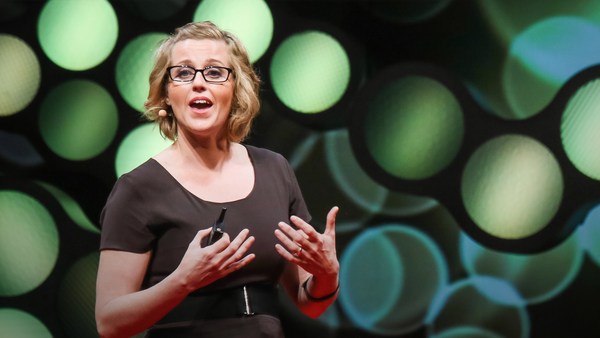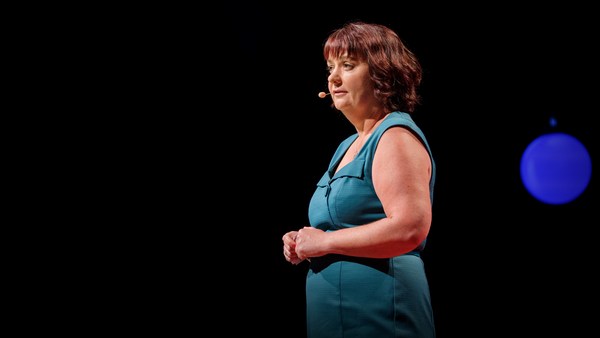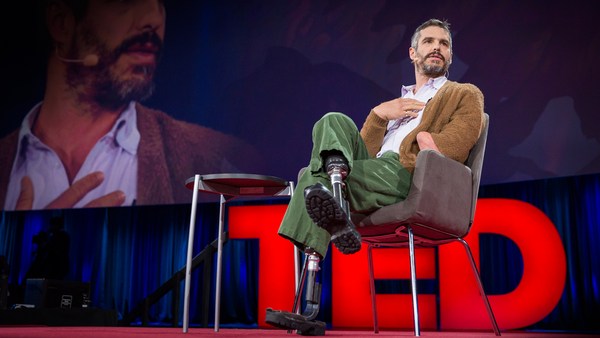I'd like to tell you a story about death and architecture.
A hundred years ago, we tended to die of infectious diseases like pneumonia, that, if they took hold, would take us away quite quickly. We tended to die at home, in our own beds, looked after by family, although that was the default option because a lot of people lacked access to medical care.
And then in the 20th century a lot of things changed. We developed new medicines like penicillin so we could treat those infectious diseases. New medical technologies like x-ray machines were invented. And because they were so big and expensive, we needed large, centralized buildings to keep them in, and they became our modern hospitals.
After the Second World War, a lot of countries set up universal healthcare systems so that everyone who needed treatment could get it. The result was that lifespans extended from about 45 at the start of the century to almost double that today. The 20th century was this time of huge optimism about what science could offer, but with all of the focus on life, death was forgotten, even as our approach to death changed dramatically.
Now, I'm an architect, and for the past year and a half I've been looking at these changes and at what they mean for architecture related to death and dying. We now tend to die of cancer and heart disease, and what that means is that many of us will have a long period of chronic illness at the end of our lives. During that period, we'll likely spend a lot of time in hospitals and hospices and care homes.
Now, we've all been in a modern hospital. You know those fluorescent lights and the endless corridors and those rows of uncomfortable chairs. Hospital architecture has earned its bad reputation. But the surprising thing is, it wasn't always like this.
This is L'Ospedale degli Innocenti, built in 1419 by Brunelleschi, who was one of the most famous and influential architects of his time. And when I look at this building and then think about hospitals today, what amazes me is this building's ambition. It's just a really great building. It has these courtyards in the middle so that all of the rooms have daylight and fresh air, and the rooms are big and they have high ceilings, so they just feel more comfortable to be in. And it's also beautiful. Somehow, we've forgotten that that's even possible for a hospital.
Now, if we want better buildings for dying, then we have to talk about it, but because we find the subject of death uncomfortable, we don't talk about it, and we don't question how we as a society approach death. One of the things that surprised me most in my research, though, is how changeable attitudes actually are. This is the first crematorium in the U.K., which was built in Woking in the 1870s. And when this was first built, there were protests in the local village. Cremation wasn't socially acceptable, and 99.8 percent of people got buried. And yet, only a hundred years later, three quarters of us get cremated. People are actually really open to changing things if they're given the chance to talk about them.
So this conversation about death and architecture was what I wanted to start when I did my first exhibition on it in Venice in June, which was called "Death in Venice." It was designed to be quite playful so that people would literally engage with it. This is one of our exhibits, which is an interactive map of London that shows just how much of the real estate in the city is given over to death and dying, and as you wave your hand across the map, the name of that piece of real estate, the building or cemetery, is revealed. Another of our exhibits was a series of postcards that people could take away with them. And they showed people's homes and hospitals and cemeteries and mortuaries, and they tell the story of the different spaces that we pass through on either side of death. We wanted to show that where we die is a key part of how we die.
Now, the strangest thing was the way that visitors reacted to the exhibition, especially the audio-visual works. We had people dancing and running and jumping as they tried to activate the exhibits in different ways, and at a certain point they would kind of stop and remember that they were in an exhibition about death, and that maybe that's not how you're supposed to act. But actually, I would question whether there is one way that you're supposed to act around death, and if there's not, I'd ask you to think about what you think a good death is, and what you think that architecture that supports a good death might be like, and mightn't it be a little less like this and a little more like this?
Thank you.
(Applause)





